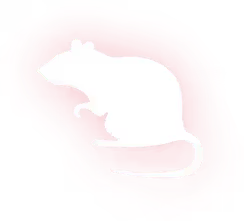

Drain Fly Removal in Herty, TX
Fast drain fly removal in Herty, TX by Spot On Pest Control, LLC. Clear drains and stop infestations quickly. Call today for reliable service!

Drain Fly Removal in Herty, TX
Drain flies (also called sewer flies or moth flies) are small, fuzzy insects that breed in organic buildup inside drains, grease traps, and other damp plumbing voids. In Herty, TX, the warm, humid conditions common to East Texas accelerate biofilm growth and make homes and businesses more vulnerable to drain fly infestations. At Spot On Pest Control, LLC., we provide professional inspection, proven remediation, and long-term prevention strategies to eliminate drain flies and keep them from coming back.
What drain flies are and how they breed
- Appearance and life cycle: Drain flies are tiny (2 to 5 mm), moth-like insects with fuzzy bodies. Females lay eggs in wet organic material; eggs hatch into larvae that feed on the biofilm and organic debris lining the inside of drains. The full lifecycle from egg to adult can be as little as one to two weeks under favorable conditions.
- Why they thrive in Herty homes: Warm temperatures and high humidity speed bacterial and fungal growth in pipes and traps, creating abundant food for larvae. Older plumbing, infrequently used drains, septic systems, and grease buildup in kitchen drains increase risk.
- Common signs: clusters of small moth-like flies on walls near sinks, persistent sightings around bathroom or kitchen drains, musty or sewage-like odors, slow-draining fixtures, and visible larvae when probing a drain.

Common drain fly problems in Herty, TX
- Recurring populations after basic cleaning due to deep biofilm in pipe bends or sewer lines
- Infestations centered on floor drains, basement drains, and rarely used guest baths
- Grease trap or kitchen drain breeding in restaurants and food-service locations
- Septic system or lateral sewer line breakdowns that deposit organic material into house drains
Inspection and diagnosis
A thorough inspection by Spot On Pest Control, LLC. determines where flies are breeding and how they are entering living areas. Typical inspection steps include:
- Visual inspection of sinks, tubs, floor drains, shower drains, utility sinks, and grease traps
- Probe tests to dislodge and inspect biofilm and larvae
- Smoke or dye tests when sewer vents or line leaks are suspected
- Checking p-traps, drain seals, and venting to confirm traps are holding water and preventing sewer gases and insects from entering
- Evaluating usage patterns to find infrequently used drains that can harbor buildup
A precise diagnosis focuses treatment on the affected drains and any upstream sewer or plumbing issues that sustain the infestation.
Remediation steps explained
Effective drain fly removal combines physical cleaning, biological treatments, targeted larvicides when needed, and removal of adult flies.
Physical drain cleaning
- Mechanical scrubbing and auguring to remove biofilm and debris from pipe walls and trap seals
- High-pressure water jetting for severe buildup or to clean farther into the branch line
- Removal and manual cleaning of accessible trap assemblies and grease traps
Enzymatic and bacterial treatments
- Enzymatic cleaners and bacterial formulations break down the organic film that larvae feed on; they help restore pipe interior to a less hospitable state
- Enzyme treatments are safe for most plumbing and septic systems when used as directed
Targeted larvicides
- Biological larvicides (for example, products containing Bti) may be applied to heavily infested drains to kill larvae not removed by mechanical cleaning
- Chemical larvicides are used selectively and according to local regulations and plumbing compatibility
Physical removal of adults
- Placement of sticky traps and use of vacuums to reduce adult populations while treatments take effect
- Temporary measures such as covering drains and increasing ventilation to reduce adult resting sites
Combined, these steps address both the immediate adult population and the underlying breeding habitat.
Typical service process and timelines
- Initial inspection and scope assessment: same-day or within a few days, depending on access. Inspection identifies all affected drains and any plumbing defects.
- First visit remediation: mechanical cleaning of identified drains, initial enzymatic application, and placement of traps or temporary barriers. This visit removes the bulk of the breeding material.
- Follow-up treatments: scheduled at 7-10 day intervals for 2 to 3 visits to address remaining larvae as they hatch and to repeat enzyme applications. Most infestations show major reduction after the first cleaning and are resolved within 2 to 4 weeks.
- Extended investigations: if breeding persists, a camera inspection of sewer lines or dye/smoke testing may be used to locate deeper organic sources or broken lines requiring repair.
- Maintenance plan: after elimination, regular maintenance enzyme treatments and cleaning schedules prevent recurrence.
Timelines vary with severity: light infestations often resolve after one deep clean plus two enzyme follow-ups; heavy infestations or structural sewer problems can take several weeks and require plumbing repairs.
Preventing recurrence — actionable recommendations
- Maintain regular drain care
- Run hot water through rarely used drains weekly to flush debris
- Use enzyme-based drain treatments monthly to keep biofilm from building
- Scrub drain stoppers and shower screens to remove surface buildup
- Manage kitchen waste responsibly
- Avoid putting fats, oils, and coffee grounds down the drain; use strainers and dispose of solids properly
- Schedule routine cleaning of grease traps and commercial drains
- Keep traps and seals functional
- Verify p-traps hold water and re-fill rarely used fixtures if traps dry out
- Replace damaged gaskets or drain assemblies that allow sewer gas and insects to enter
- Seal entry points and control moisture
- Repair leaks, improve ventilation in bathrooms and basements, and seal cracks around floor drains
- Use drain covers and screens where practical to reduce adult resting sites
- Monitor and maintain septic systems
- Regular septic inspections and pumping prevent backups that can feed drain fly populations
- Address lateral line issues promptly to avoid contamination of household drains
Why timely action matters
Drain flies reproduce quickly; a small, unseen population can become a large nuisance in weeks. Left unchecked, organic buildup can also contribute to slow drains, odors, and more significant plumbing or septic problems. Prompt, comprehensive treatment removes the breeding source and reduces the likelihood of repeated service calls.
Maintenance tips tailored to Herty, TX homes
- Given Herty's warm, humid climate, enzyme-based maintenance increases during late spring and summer when biofilm builds fastest.
- Inspect seldom-used guest bathrooms and outdoor utility drains after extended humid periods or heavy rain.
- If your property uses a septic system or has older clay sewer lines, include periodic professional inspections to catch issues that favor drain fly breeding.
Addressing drain flies thoroughly means fixing the plumbing conditions they depend on—not just killing adults. With inspection, targeted cleaning, enzymatic maintenance, and follow-up, Spot On Pest Control, LLC. delivers the most reliable long-term control for homes and businesses in Herty, TX.
Eliminate Drain Flies for Good
Don’t let drain flies take over your home or business. Trust Spot On Pest Control, LLC. for expert inspection, thorough cleaning, and lasting prevention in Herty, TX. Call us today to schedule your drain fly removal service and enjoy a cleaner, pest-free environment!
Our Services
Our pest control services cover ants, termites, bed bugs, rodents, mosquitoes, and other common pests, with customized solutions for both residential and commercial properties.
.png)


